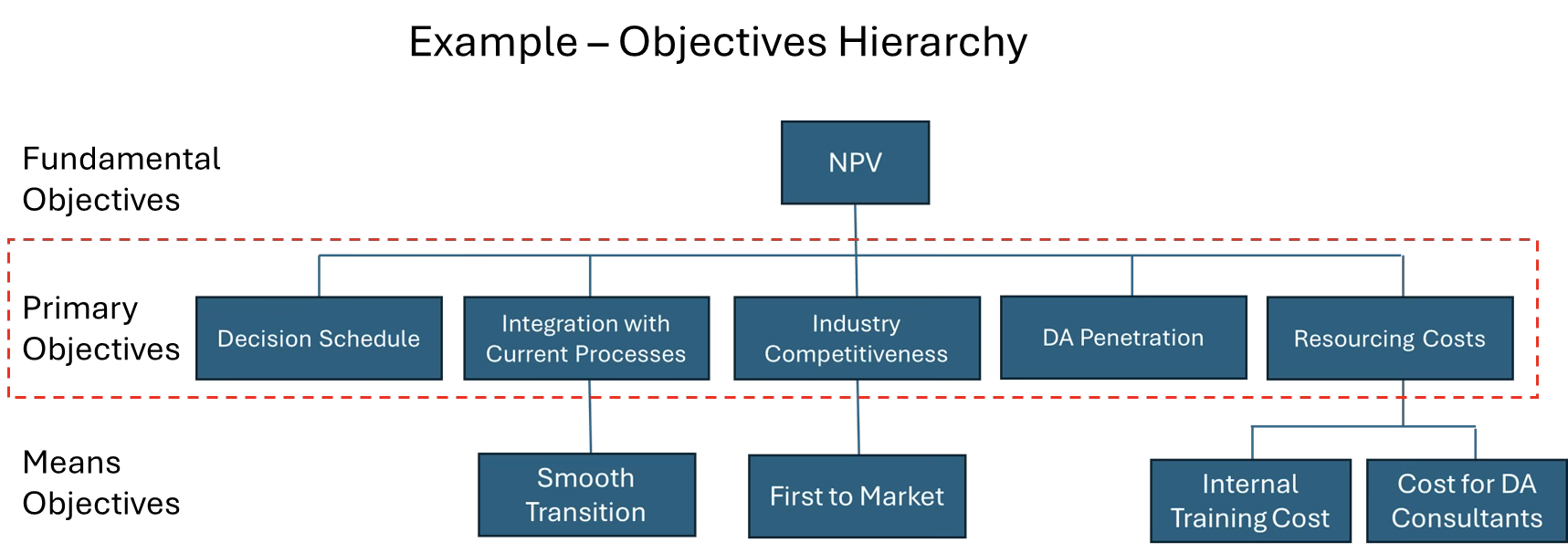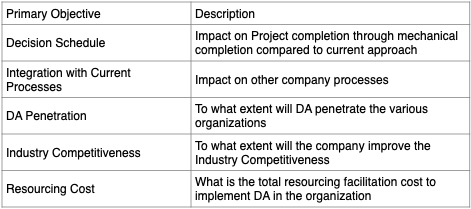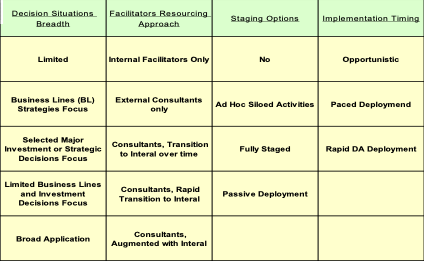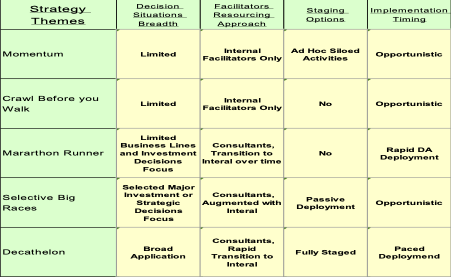What is the Decision Analysis Best Practice to identify Strategic Alternatives, commonly referred to as Strategic Themes? This article reviews this question and illustrates the best approach to develop a robust set of cogent alternatives in a variety of decision environments. In this stage of the decision analysis process, each of the alternatives is a potential solution to the Strategic Question, Framing or Opportunity Statement that was crafted earlier in the Framing Stage (and then reviewed and validated with the Decision Maker).
For this exercise, we can use the question above as the Opportunity Statement: What is the Decision Analysis Best Practice to identify Strategic Alternatives, commonly referred to as Strategic Themes, across a variety of decision environments?
In this example, we will use a global Oil & Gas organization that is interested in developing the optimum Strategy for applying Decision Analysis in their organization. The Framing Team has gone through the first day of a two-day Framing Workshop and these tasks are complete:
- Aligned Strategic Question and Scope
- Developed and Endorsed Project Objectives
- Identified Focus Decisions
- Completed Alternative Matrix (Doable choices for each Focus Decision)
As shown in the Objectives Hierarchy below, the Fundamental Objectives are usually financial in nature and are not considered at this stage. Similarly, the Means Objectives are not germane to the discussion of alternatives. The Primary Objectives become the Decision Criteria which will be used in the qualitative assessment of the identified Strategic Themes and the completion of the Strategy Table.

It is a best practice to drill down further into the detail of the Primary Objectives as shown in the table below.

The Focus Decisions developed during the first day of framing are:
- Decision Situations Breadth
- Facilitators Resourcing Approach
- Staging Options
- Implementation Timing
The Alternatives Matrix is as follows:

With the Alternatives Matrix complete, developing a broad set of Strategic Themes is the next step. The Framing Team should conduct a brainstorming session to inspire creativity and to “stretch” the thinking of the Framing Team. The goal of this session is to create a broad set of wide-ranging potential Strategic Themes.
Before using the Alternatives Matrix to start mapping Strategic Themes, the Framing Team should brainstorm a list of potential themes. They should take each objective and identify Strategic Themes that should have a positive outcome for that objective. With a typical 8-10 Framing Team size and you can expect 20+ themes identified. The Framing Team then reviews the list to eliminate duplicates and to rationalize close pairs (you will always have some). A Framing Team will typically end with 4-6 surviving Strategic Themes, a manageable yet robust set.
As a side note, if is helpful to use an overarching motif for naming the Strategic Themes. The Strategic Theme names should be descriptive of the main idea behind the strategy. As an example, a Strategic Theme named “Money is No Object” would be a high capital theme to test a high production capacity. In this example, the team chose a racing theme. The surviving Strategic Themes are shown with a pithy description below:
- Momentum
- What is the company doing now. While you are not likely to choose this strategy it succinctly describes what doing nothing means
- Crawl Before you Walk
- Take small steps before you dive in
- Marathon Runner
- In for the long run
- Selective Big Races
- Focus only on big decisions in capital projects or business strategic issues
- Decathlon
- Broadest Application across the organization
One test that I usually encourage Framing Teams to use is a compass, pictured below. The Compass is used to illustrate the dimensions of the Strategic Themes and to identify any “holes” in the analysis where no Strategic Theme was created. As shown, each axis of the compass relates to a single objective. Further axes can be added to the compass if needed.

The completed Strategy Table looks like this:

